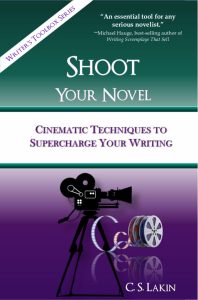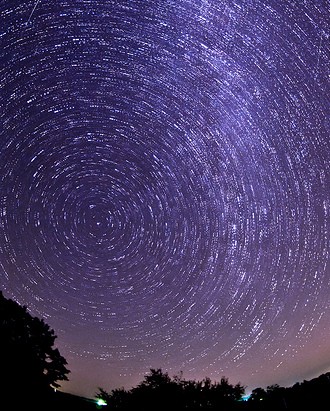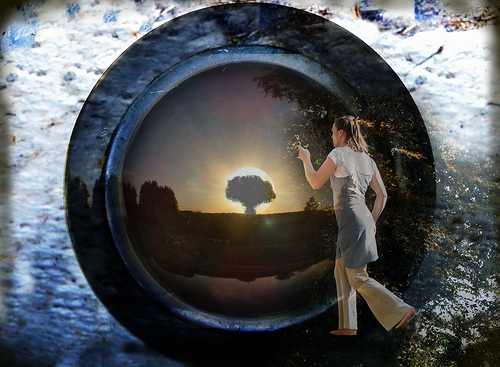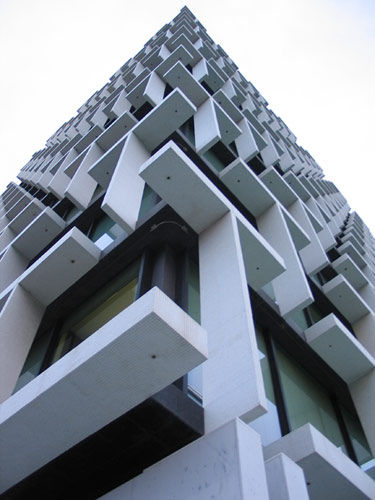How to Create a Powerful Image System for Your Novel
On Throwback Thursdays, we’re looking at excerpts from past posts on Live Write Thrive. Today’s post comes from How Novelists Can Create Image Systems for their Story. Creating an image system for your novel can enhance the reader’s experience and help to subliminally affect them emotionally.
Last week, we touched on a concept called Image Systems, which is something filmmakers consider when preparing to shoot their movie. Image systems can be made up of many different types of components, and by looking at some movies with powerful image systems, hopefully you will get some ideas of how you can do similarly with your novel. Using an assortment of these “building blocks” can give deeper meaning to your overall story.
In the movie The Sixth Sense, writer/director Shyamalan uses red to link with the supernatural. In every scene in which something “beyond the veil” is shown, you’ll find an object in red: a balloon, a sweater, a tent, and many others. Using a repeated color is probably the most common element in an image system, which makes sense with movies, since they are so visual.
Not Just Color
But there are other things that can act as symbols or motifs in a visual image system. In K-Pax (2001)—a movie whose premise centers around traveling on light beams—in many of the scenes light is captured and portrayed in a creative evocative way, consciously and unconsciously reminding the viewer that light is the element tying the entire story together, as well as acting as symbol on many levels.
Prot, the protagonist not only travels on light, he is what the pure essence of light signifies—all goodness, kindness, divinity or angelic power and nature, clarity, truth. He is the “light” in this story, and he lights the way for many to be healed, which is the crux of the plot.
In interesting contrast, Prot finds the light of Earth’s sun too bright and wears dark glasses, and wants the blinds closed in rooms. The glaring light of the “truth” of flawed humanity hurts. Often the light catches objects in fascinating ways, creating rainbow prisms or illuminating certain parts of a room or face.
When you get a chance to watch this movie, note how many times and in how many ways light is used specifically in this image system. It’s brilliant (pun intended).
In the movie What Lies Beneath (2000), which is about a woman who sees a young woman reflected in the lake beside her home, we see another image system. It’s a haunting movie with water themes, and the title nicely ties in with this theme of uncovering what really lies beneath all the visions and voices this couple experiences in their home. Water is thematic in this image system, featuring scenes with the lake, a girl drowning, the rain, water in the bathroom, steam, the tub overflowing, and others.
In The Silence of the Lambs (1991), we see not one specific element as the focus of the image system but a genre or type embodied in many ways. A mythic/fairy tale of good versus evil thread weaves throughout with allusions to labyrinth and minotaur, with a monster in a cage (Hannibal Lecter is an aberration with six fingers on each hand), with the princess at risk (Buffalo Bill abducts a daughter of a senator: i.e., royalty), and there are lots of little fairy tale nuances like moths and mice and spiders.
Thinking in terms of creating a larger, visual symbolism through the use of repeated types of shots, angles, colors, and other visual elements (that can be either blatant or subtle in the shots) can supercharge an already “good” novel. Filmmakers call these specific moments in a movie “emblematic shots.”
Emblematic Shots to Highlight Theme
Think about including emblematic shots that reveal theme and motif. Is there a place your character keeps coming back to? An emotion they keep struggling with that can be symbolized by a particular scene composition and camera angle? A place where they reflect and look out on the world that can subliminally indicate their mood, self-image, or view of others? An object that they study close up?
Emblematic shots are usually placed at the beginning and end of meaningful scenes, to emphasize them, make them stand out.
Here’s something you can try. Imagine taking one (only one) snapshot of your novel (not the actual physical book). This picture needs to “tell” what the core idea or theme of your story is about.
Think movie poster. A movie poster has to somehow convey the feel and premise of the entire movie. Imagine showing this picture you took of your novel to a stranger and asking them what they think the theme or core idea is behind the photo. Ask them what symbolism comes through. Did you include symbolic elements? What colors did you choose?
Even without knowing the emotional power of each color, we all resonate similarly when it comes to colors. Can you come up with one image that can be the core of your image system? We all know a picture is worth a thousand words. If your picture can just speak a dozen key words to you, you can build an image system around it.
Positioning the Angle for Subconscious Effect
I mentioned earlier a scene in which the camera was positioned from a high angle and how it created the sense of vulnerability for the character. A high-angle shot is commonly used when trying to convey that a character feels defeated, lacking confidence, or is weak or small.
In contrast, when the camera tilts up from below to look at a character, it subconsciously implies importance and strength, with the character in a dominant position, one above others. Just as a small child would have to look up to a tall adult, emphasizing the dominant/subordinate relationship in power and authority, so too a camera shot tilting up showing a character implies this character may be confident, assertive, powerful, domineering. This can tie in with your emblematic shots in your image system for your story.
Next week we’ll look more at how you can “tilt your camera” and produce subconscious connections in your scenes.
Want to learn more about using cinematic technique in your story?
Shoot Your Novel is a unique writing craft book that covers this topic as no other book or course does!
Listen to what some writers have said about this writing craft book:
I just finished reading Shoot Your Novel, and my mind is “exploding” with new ideas. Unlike her book, Writing the Heart of Your Story, in which I said in my review, I wish I would have read this BEFORE I wrote my first draft, I find this book just perfect for writing the SECOND draft. All my scenes have already been written. This makes it easy for me to use what I have learned to reexamine them with a cinematographer’s hat, and rewrite them for maximum effect. I’ll never watch a good movie, or read a good book the same way again.
Shoot Your Novel was one of the best writing craft books I’ve read. They say a picture is worth a thousand words, but Lakin has put them on an even footing by providing skillful scene building techniques that make a novel read like a block-buster movie. Wonderful!
If you are going to write and snag the interests of minds with shorter attention spans, or if you want to add moving texture to your text, this book is well worth your re-read! If you like the flow of cinema, and want to capture some of that feel in your writing, then this is the only book I know of that can do it.
If you want to make your scenes come alive and you’re not sure how to do it, this book will show you how!
Get your copy in print or ebook HERE.
Think of a movie poster you might design and consider all the elements you might put in it—what expressions the actors might show on their faces, what items are in the foreground and background, and what type of setting and colors you might use. Think about why you made the choices you did, and consider how they might be used more pointedly in your novel to create an image system.
Share some of your ideas with us! What does your “movie poster” look like?












Thanks, Susanne!
My favorite imaging system is using the persona of an actor, including physical features and speech mannerisms, to develop a character. As I write, I see the person and hear what they say. It helps me create realistic dialogue, and sometimes the story writes itself.
I must admit I spend more time paying attention to micro expressions than sets, but I’ll be more observant of colors and recurring symbols in future.
Thanks for the comment. Image systems have to do with overall themes, motifs and colors–things that stylize your story. I have a few posts on image systems, so I hope you check them out because creating such systems within your novels can be powerful.